SUMMARY
This is AI generated summarization, which may have errors. For context, always refer to the full article.
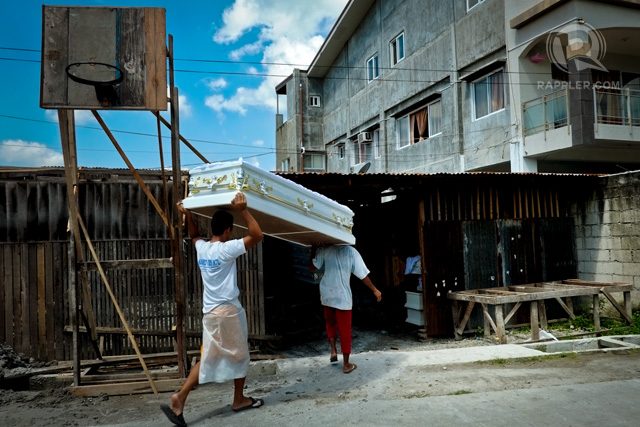
PAMPANGA, Philippines – It’s high noon and two men are carrying a coffin along the streets. No, it’s not a Halloween prank. It’s just a typical day in the town of San Vicente, in the municipality of Santo Tomas, some 60 kilometers north of Metro Manila.
Many of the townsfolk in San Vicente earn a living by making caskets for dead men, with about 40% of the local population depending on the multi-million peso coffin-making industry.
“Barangay Kabaong.” This is how Pop Basilio calls his hometown, which has earned the moniker “Coffin Capital of the Philippines.”
San Vicente produces an estimated 25,000 coffins every month. It may seem like a lot of dead people, but there are actually times when coffins are in short supply. And these are during times of tragedy. (READ: The cost of dying in the Philippines)
In 2012, Sto. Tomas donated 500 caskets for the victims of Typhoon Pablo in southern Mindanao. Likewise, they donated 500 coffins to the victims of Typhoon Sendong in Cagayan de Oro in 2011.
Ironically, the coffin town found itself in a state of calamity, submerged in chest-deep floods, when the Sto. Tomas-Minalin Tail Dike was breached by rising waters last year, during the height of Tropical Storm Maring.
“Caskets were floating in the flood,” recalled Ronnie Roque, a backyard coffin-maker.
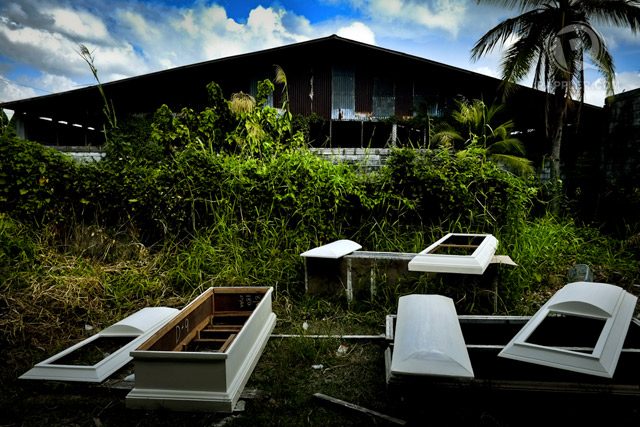
Business is alive
According to the Department of Trade and Industry, San Vicente supplies about 70% of the country’s caskets.
But a source said the figure may be a conservative estimate, since only about 20% are registered businesses, classified under “wood and metal crafts.”
It is estimated that there are over 300 family-owned businesses involved in the casket industry. But there are many undocumented, backyard, and small-scale coffin-makers in town.
“I think San Vicente supplies probably around 80% of the coffins in the country,” claimed Pop, a second generation coffin-maker, who co-manages the family business with his elder brother, Nong.
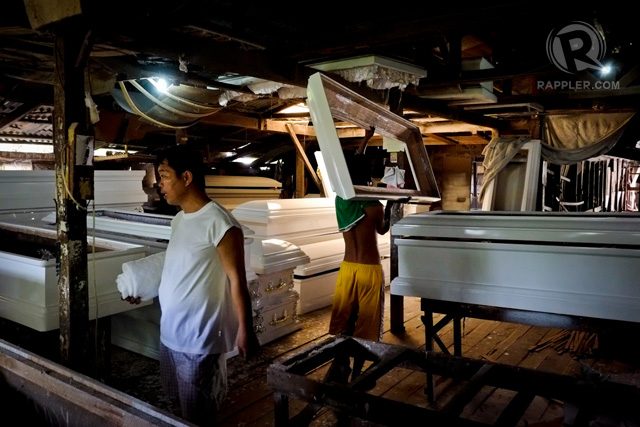
The Basilios, who established their coffin-making business the year Ninoy Aquino was killed, Pop, who was still a 3-year-old toddler then, believes they were among the first few coffin-makers in town.
With their factory now producing a weekly average of 60 caskets a week, the Basilios are among the biggest manufacturers in San Vicente. Pop recently expanded their area of operations with two new manufacturing sites.
Pop said he supplies caskets to funeral parlors in Manila, Makati, Pasay, Paranaque, Cavite, and Laguna.
He also revealed that each family-run coffin business has its own network of dealership. There are suppliers for the northernmost parts of Luzon and there are suppliers for the southernmost parts of Mindanao.
“Our cheapest coffin costs between P2,500 (US$56) to P3,000 (US$67),” Pop said. These are wooden, flat top caskets.
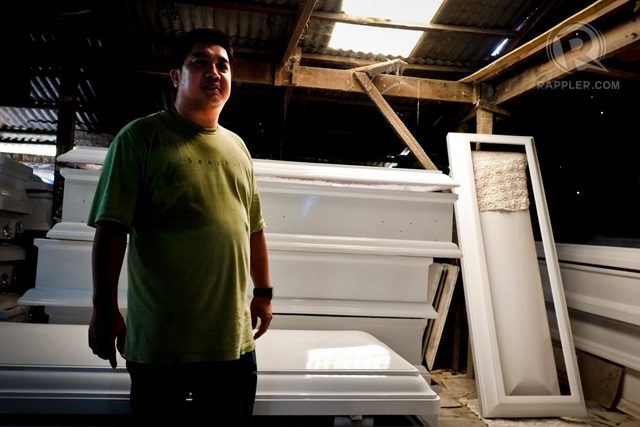
It seems retailers are making a killing reselling coffins. Apparently, the average mark-up for each casket is around 1,000%.
Meanwhile, Ronnie confessed that his average mark up for the metal coffins he makes is only about P5,000 (US$112). He makes about five coffins a week, which he sells for about P15,000 (US$335). But he has to pay for the fabrication of the metal boxes, the wages of his four workers and their P200 (US$4.50) share for every coffin sold, and the money he owes loan sharks.
In business for 7 years now, Ronnie, who hails from Bataan, was drawn to San Vicente because of its booming coffin industry.
“Many of the small-scale coffin-makers in here are migrants,” Ronnie revealed. He also said many of the workers here came from nearby towns and neighboring provinces.
Ronnie has been able to support his family with his backyard operation. But since he cannot directly compete with big business, Ronnie said he tapped social media to help him expand his business.
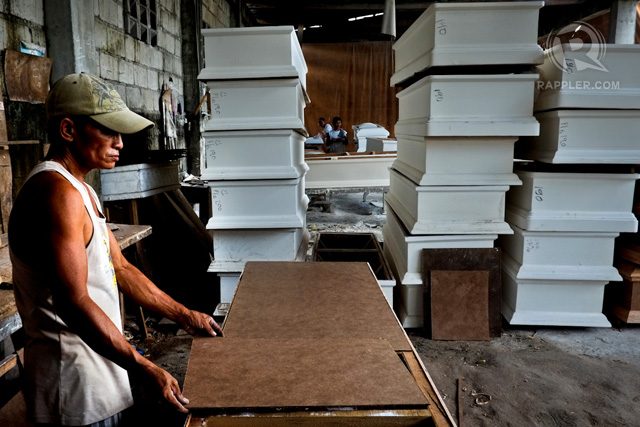
Among the allied industries that benefit from casket-making are coffin accessories. There’s actually a large store selling coffin accessories on the main road of San Vicente. Even the pottery artists have a symbiotic relationship with the coffin-makers.
“We make extra money selling wood scraps to the pottery-makers,” Pop said.
The scrap wood is used to fire up the kiln and bake the clay pots. Aside from coffin-making, the other major industry of the municipality of Santo Tomas is pottery-making. Some of the pottery firms supply local demand, while some export their products to other countries.
Unlike the coffin-making industry, pottery-making may be a dying industry. There were only 10 major pottery operators left twenty years ago. But there are still a few backyard potters in operation, most of them are struggling with financing their business.
“Ghost. They should be playing music from the movie Ghost,” Ronnie said with a chuckle, referring to “Unchained Melody,” as he watched his neighbor at work at the potter’s wheel.
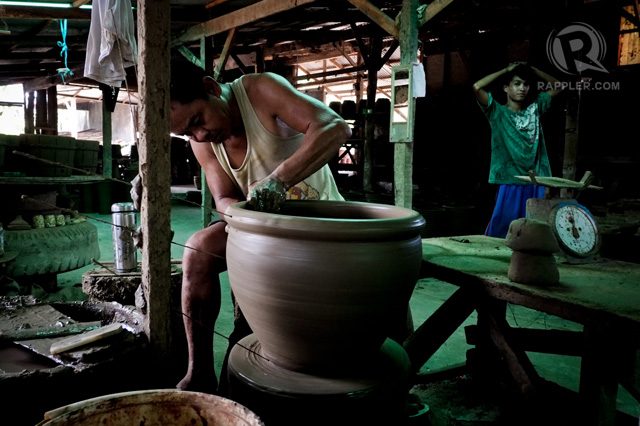
– Rappler.com
Add a comment
How does this make you feel?
There are no comments yet. Add your comment to start the conversation.